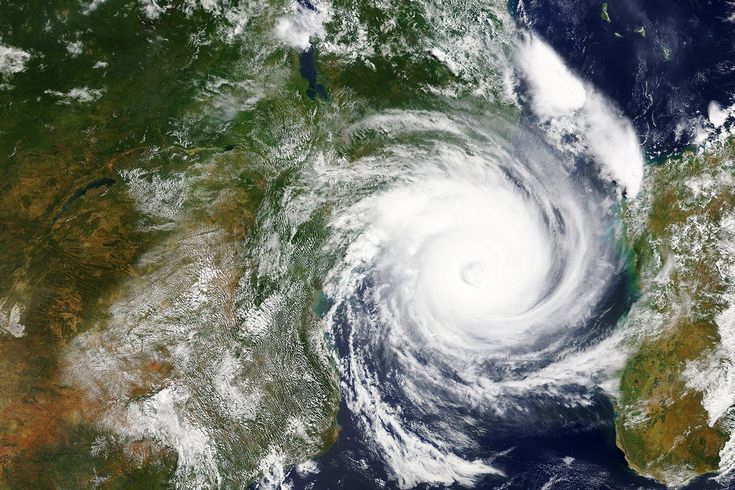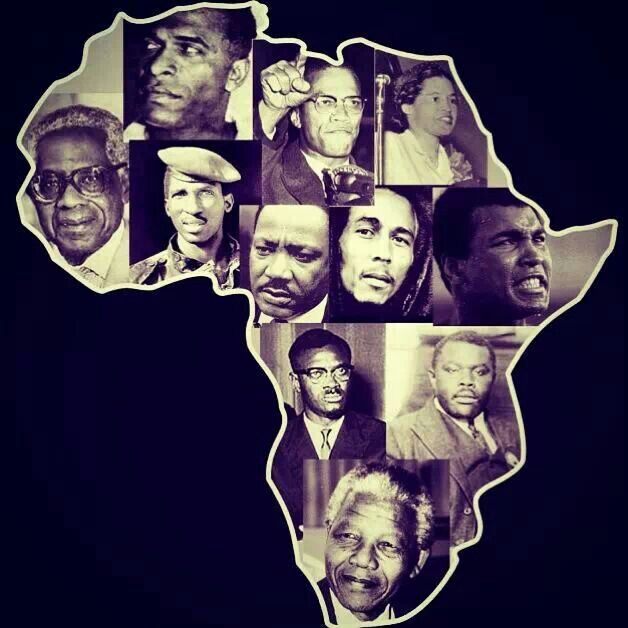Cyclone Idai 2019: Southern Africa’s Deadliest Storm in a Generation

What if I told you that in March 2019, an entire city of half a million people vanished beneath water, swallowed not by an invading army or a great flood from ancient myth, but by a storm scientists saw coming days in advance? That single cyclone, Idai, did not just tear down homes and drown roads; it erased entire communities from memory, scattering families, collapsing economies, and leaving behind a crisis so large that it rivaled some of the deadliest natural disasters of the 21st century.
Cyclone Idai is not just a story of nature’s fury. It is a story of how the modern world remains astonishingly unprepared for climate catastrophes, especially in regions already battling poverty, fragile infrastructure, and weak governance. To understand Idai is to understand how Southern Africa’s history was rewritten in one month of wind, rain, and tragedy.
Photo Credit: Pinterest
The Birth of a Storm
The story of Cyclone Idai begins, as most cyclones do, over the warm waters of the Indian Ocean. In early March 2019, meteorologists detected a tropical disturbance forming near the Mozambique Channel. For days it brewed quietly, like an unnoticed spark in a dry forest. But as it drifted westward, gathering heat and moisture, it rapidly intensified.
On March 4, the system made landfall in Mozambique’s Zambezia Province, already bringing torrential rain. Then, instead of fading like many storms do after touching land, it re-entered the oceanic waters, regained strength, and transformed into one of the most intense cyclones Southern Africa had ever seen. By March 14, when it made its second and far more devastating landfall near the city of Beira, Idai carried sustained winds of 175 km/h (110 mph).
Beira, a port city that lay at the heart of Mozambique’s economy, was ground zero. Within hours, 90 percent of the city was destroyed or severely damaged. Satellite images captured before and after the storm showed what looked like two different landscapes. Where there had once been roads, houses, schools, and markets, there was now only brown water stretching to the horizon.
But Beira was only the beginning. Idai cut across central Mozambique, its rains swelling rivers and submerging villages. As it moved inland, the cyclone did not weaken quickly. Instead, it dragged its destructive energy into eastern Zimbabwe and southern Malawi, flooding valleys, toppling bridges, and cutting off towns. The storm had effectively redrawn the geography of three nations in less than a week.
Human Toll and Human Stories
The official numbers tell only part of the story: at least 1,593 people confirmed dead, more than 2,262 missing, and three million directly affected across Mozambique, Malawi, and Zimbabwe. But the human stories behind these numbers reveal the true weight of the disaster.
In Mozambique, families clung to trees for days, waiting for helicopters that sometimes never came. In Beira, hospitals ran out of space for the injured, and bodies lay in the open because morgues had been flooded.

Photo Credit: Pinterest
In Zimbabwe, landslides swallowed entire communities in Chimanimani and Chipinge districts. Survivors recalled hearing a roar like thunder as entire hillsides collapsed, carrying away homes, cattle, and people in the dead of night.
In Malawi, already battered by years of flooding and drought, hundreds of thousands were displaced. The country’s already fragile health system was quickly overwhelmed as cholera cases spread among crowded shelters.
For the survivors, Idai was not only about loss but about separation. Families were torn apart in the chaos, with parents searching for missing children and children wandering camps searching for mothers or fathers. Weeks later, stories of reunion trickled in, but so too did the heartbreaking accounts of those who never found their loved ones.
The Cost of a Cyclone
The economic devastation of Cyclone Idai was staggering. Mozambique alone reported damages of around $2.8 billion. Combined with losses in Zimbabwe and Malawi, the regional figure climbed to $3.3 billion. To put this in perspective, this was more than the entire GDP of Malawi in 2019.
Beira’s port, a vital lifeline not just for Mozambique but for landlocked neighbors like Zimbabwe, Malawi, and Zambia, was paralyzed. Roads leading inland were washed away, severing supply lines and choking trade. The region’s breadbasket, with fertile farmlands along the Buzi and Pungwe rivers, was left underwater just weeks before harvest. Fields of maize, sorghum, and cassava turned into mud, triggering food shortages that lasted months.
The storm also obliterated infrastructure. More than 715,000 hectares of farmland were destroyed. Around 90 percent of Beira’s infrastructure was damaged, including schools, clinics, water systems, and electricity lines. More than 240,000 homes were damaged or destroyed across Mozambique. In Zimbabwe, critical bridges along trade routes were swept away. In Malawi, irrigation schemes that sustained rural farming communities were ruined.
But perhaps the most haunting cost was the outbreak of disease. Flooded latrines and water supplies contaminated drinking water. By late March, just two weeks after the storm, cholera cases began rising in Mozambique. Within weeks, more than 6,000 cases were reported, making the humanitarian crisis a double disaster: first the storm, then the epidemic.
.jpeg)
Photo Credit: Pinterest
A Region on Its Knees
Cyclone Idai exposed the vulnerability of Southern Africa to climate-driven disasters. While the Indian Ocean regularly spawns cyclones, the scale of Idai was unprecedented. Scientists later linked its intensity to unusually warm ocean temperatures, a phenomenon connected to climate change.
But climate change alone does not explain the devastation. Weak infrastructure, limited disaster preparedness, and poverty magnified Idai’s impact. Mozambique, despite being prone to cyclones, had few effective flood defenses. Warning systems existed, but many rural communities never received alerts. Even those who did often had nowhere safe to evacuate to.
The humanitarian response, though swift, faced immense challenges. Flooded roads and destroyed bridges meant that many areas were only accessible by helicopter or boat. The World Food Programme (WFP), UNICEF, and the Red Cross launched massive operations, but logistics bottlenecks slowed the delivery of aid. At one point, entire communities survived on biscuits dropped from the sky.
International solidarity poured in. The African Union pledged emergency relief funds. The European Union, the United States, China, and numerous countries sent aid. NGOs mobilized. But the sheer scale of the disaster dwarfed resources. Months after the storm, hundreds of thousands remained displaced, and food insecurity persisted.
Legacy of Idai
The legacy of Cyclone Idai is layered. On one hand, it triggered a major humanitarian crisis that reshaped how Southern Africa and the world view disaster preparedness. On the other, it left wounds—physical, economic, and psychological—that continue to shape the region years later.
For Mozambique, Idai was followed just weeks later by another cyclone, Kenneth, which struck the north of the country. Two cyclones in such quick succession underscored the growing volatility of the climate. Mozambique, one of the poorest nations in the world, became a frontline example of how vulnerable countries pay the highest price for global warming.

Photo Credit: Pinterest | Cyclone Kenneth
In Zimbabwe, Idai deepened an already existing economic crisis. With inflation rising and political tensions simmering, the storm became another reminder of the fragility of governance. Communities in Chimanimani still struggle to rebuild, with roads and bridges yet to be fully restored years later.
In Malawi, Idai compounded food insecurity and slowed development projects. The government, with international partners, has since invested more in early-warning systems and community-based disaster response. But progress remains fragile.

Photo Credit: Pinterest
Globally, Idai forced humanitarian organizations to confront the reality that disasters are becoming more frequent and more intense. The cyclone has been studied in climate science as a case study for how warming oceans fuel stronger storms. It has also been cited in international debates on climate justice, highlighting how nations least responsible for carbon emissions suffer the worst consequences.
Remembering Idai
Disasters often fade from the headlines once the immediate crisis passes. But for those who lived through Idai, the memories are inescapable. The storm turned Beira into a city of ghosts, where some neighborhoods have yet to recover. It turned rivers in Zimbabwe into mass graves. It turned Malawi’s farms into fields of hunger.
Yet it also revealed resilience. Communities rebuilt schools with whatever materials they could find. Farmers replanted crops as soon as waters receded. Survivors formed networks of support in camps. Aid workers from across the world risked their lives to deliver help.
Cyclone Idai was a tragedy, but it also stands as a warning. It warns that the age of extreme weather is not coming—it is already here. It warns that the poorest will bear the brunt unless global action is taken. And it warns that history will remember not just the storm itself, but how humanity responded to it.
Because Idai was not just another cyclone. It was a disaster that redrew maps, redefined lives, and reminded us that in the face of climate change, no nation is truly safe.
You may also like...
World’s Strongest Currencies Compared to the U.S. Dollar

The Dollar may be powerful, but it’s far from the strongest. See the top currencies in the world that outshine it, and w...
World’s Strongest Currencies Compared to the U.S. Dollar

The Dollar may be powerful, but it’s far from the strongest. See the top currencies in the world that outshine it, and w...
Why Do Africans Become More African After Leaving Africa?

Why do Africans abroad suddenly embrace their roots with pride? From Afrobeats in London to Yoruba weddings in New York,...
Boxing Icon's Son in Legal Turmoil: Julio Cesar Chavez Jr. Faces Cartel Allegations & Deportation Drama!

Mexican boxer Julio César Chávez Jr. has been deported from the U.S. to Mexico, where he was immediately jailed for alle...
Super Falcons Make History: Nigeria Crowned WAFCON Champions for 10th Time in Thrilling Win!
)
Nigeria's Super Falcons made history by clinching their 10th Women's Africa Cup of Nations title with a spectacular 3-2 ...
Paolo Sorrentino's 'La Grazia' Dazzles Venice, Earns Raves

Paolo Sorrentino's latest film, 'La Grazia,' captivated the Venice Film Festival, earning a four-minute standing ovation...
KPop Demon Hunters Ignites Oscar Buzz, Captivates Audiences

The animated film "KPop Demon Hunters" has emerged as a record-breaking global phenomenon, topping Netflix viewership ch...
Naira Marley Breaks Silence: Explosive Defense in Mohbad Case Rocks Nigeria!

Naira Marley has released a documentary sharing his side of the story regarding the tragic death of his former signee, M...

